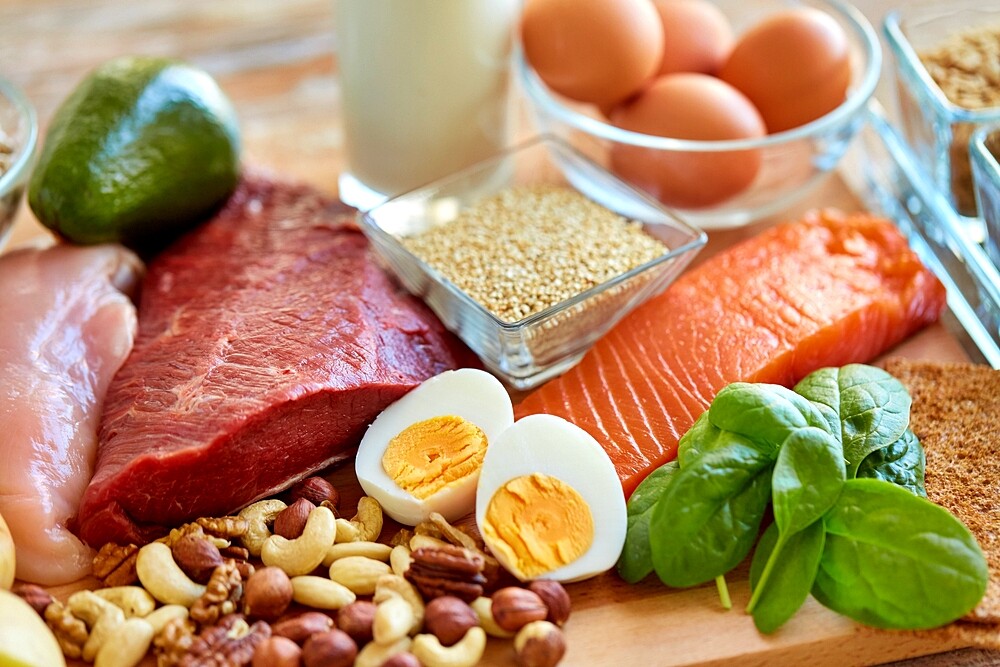Protein functions as a building block of our muscles and is currently being heavily hyped again. We will show you what a high-protein diet looks like.
Protein-rich diet: Function
- Protein is more in vogue today than ever before. While in the past bodybuilders were raving about amino acids (building blocks of proteins) and protein shakes, protein is now also high up in the rankings for those who want to lose weight.
- Since proteins are the building blocks of our muscles, they are not energy suppliers, unlike carbohydrates or fats. And because protein is very satiating, a diet optimized for high-protein foods is advantageous for losing a few kilos.
- In contrast to carbohydrates, protein does not trigger insulin release either, as it does not affect the blood sugar level.
Meat or plant
- When talking about protein, most people probably think of meat, eggs and fish first. Animal protein-rich foods have a high biological value, so our body can absorb and process them very well. This is due to the fact that the structure of animal proteins (amino acids) is very similar to our human.
- But animal proteins also contain more fat and cholesterol. Ideally, you mix animal proteins with vegetable proteins, also to cover the greatest possible variety of amino acids.
Where is the most protein per 100 grams?
- Soya flour: 40 grams
- Hemp seeds: 37 grams
- Soybeans: 34 grams
- Serrano ham: 30 grams
- Harz cheese: 30 grams
- Emmental: 28 grams
Good combinations
A high biological value is achieved in particular through a combination of protein-containing foods, often also plant and animal foods.
- Potato and fried egg
- Egg and milk
- Beef and potatoes
- Lentils and poultry
- Couscous with Feta
Choosing of protein-rich vegetable foods
- Amaranth
- Quinoa
- Oatmeal
- Wheat
- Beans
- Peas
- Soybeans
- Brussels sprouts
- Fig
- Peach
- Plums
- Peanut kernels
- Linseed
- Cashew nuts
Choosing of protein-rich animal foods
- Cheese (Gouda, Camembert, Brie, Feta, Emmental etc.)
- Low-fat curd
- Yoghurt
- Milk
- Tuna
- Sardine
- Mackerel
- Shrimp
- Perch
- Saithe
- Ham
- Minced meat
- Lamb filet
- Schnitzel
- Salami
- Duck
- Chicken egg
Choosing protein-containing foods
- A protein-rich diet can be implemented in many different variations. The focus is on your project. Do you want to lose weight or gain weight? Or maybe just keep your weight? Then your choice and quantity of protein-rich food will be reduced.
- Lean foods (e.g. chicken, skimmed milk, low-fat curd cheese, etc.), which contain little fat and thus fewer calories overall, are suitable for losing weight. They are also very filling. However, if you want to gain weight, it does not hurt to also fall back on fatty protein sources (schnitzel, salami, mackerel etc.).
- Just because a food contains a lot of protein does not automatically mean that it is healthy or helps you with your diet. Always take a close look at the calories and macronutrients and weigh up how well it fits into your diet.

